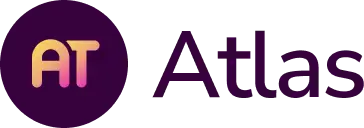3 Components of a Quality Public Site in Atlas
Utilizing a Public Site in Atlas is a feature that schools access to meet a variety of needs, including- providing transparency to the broader community
- sharing critical course information with parents and students
- meeting mandates from accreditation groups, outside organizations or states
- recruiting for teachers and students
- demonstrating pride in their curriculum and the desire to share it out
1. The Welcome Page
The first consideration for schools to make in the construction of their public site is their welcome page. As the first interaction the public will have with the site, it is crucial that it clearly directs stakeholders to the information they are looking for. Start your planning by defining your audience. Is this site designed to share your curriculum and other information with parents, the community at large, accreditation or state agencies, or some combination of these? Determining who will be using your site is the first step in ensuring that you include the information most relevant to them as well as facilitating access to the information the most appropriately. Once you have determined the audience of your site, consider the message you want to communicate and how to articulate it the most effectively. Address in a statement on your welcome page why you have a documented curriculum and how it is used by the school or district. This statement should also include a rationale for why you are opening up your curriculum and who the intended audience of this platform is. Included with these basic components should be the contact information of relevant leaders or coordinators who stakeholders should refer to with questions or concerns. Lastly, schools should consider accessibility in the design of their welcome page. In both of these examples, schools have included some basic instructions for navigating the site or links to instructional videos. The school below has also opted to include a link to translate the curriculum into a different language.
Lastly, schools should consider accessibility in the design of their welcome page. In both of these examples, schools have included some basic instructions for navigating the site or links to instructional videos. The school below has also opted to include a link to translate the curriculum into a different language.

2. Course Information
Under the 🌐 All Curriculum tab of your internal, private Atlas site, you will find links to Browse, Adopted Standards, and References. When customizing your public site, you have the ability to customize this tab to include a variety of different collections of information for your stakeholders. Schools should also consider how much detail about each course they would like to share, including course titles and teacher information. Here are three of the most common ways that schools display their course information.By including a All Courses tab, schools allow stakeholders to explore their curriculum by using filters. Schools can decide whether to share all of the entire curriculum map, unit calendar, or course descriptions when viewers select a course and open it. Schools can also determine if they would like to make the attachments included in their unit plans public or to keep them as exclusively internal documents for teacher reference.
 Many schools opt to include a bank of course descriptions in their public site. When designing curriculum, Atlas provides a field for a course description for every course and unit. Users can use the same filtering features to explore grade levels and content areas and read the descriptions of each course without the details of the unit calendar or curriculum map.
Many schools opt to include a bank of course descriptions in their public site. When designing curriculum, Atlas provides a field for a course description for every course and unit. Users can use the same filtering features to explore grade levels and content areas and read the descriptions of each course without the details of the unit calendar or curriculum map.
 Another option schools may choose to include their adopted standards as a feature of their public sites. This will provide a set of dropdown menus for users. They will be able to select the content area standard set, then narrow to a specified grade level or band, and if the standard set is broken down by strand, a dropdown menu including these will appear as well.
Another option schools may choose to include their adopted standards as a feature of their public sites. This will provide a set of dropdown menus for users. They will be able to select the content area standard set, then narrow to a specified grade level or band, and if the standard set is broken down by strand, a dropdown menu including these will appear as well.
 Schools may also consider including a 📊 Reports tab to their public site, giving access to some or all of the reporting features to help stakeholders review their curriculum through a variety of filters and data representations. This feature may be especially useful if one of your target audiences is an accreditation body who would need to review specific groups of curriculum maps or certain components across multiple courses.
Schools may also consider including a 📊 Reports tab to their public site, giving access to some or all of the reporting features to help stakeholders review their curriculum through a variety of filters and data representations. This feature may be especially useful if one of your target audiences is an accreditation body who would need to review specific groups of curriculum maps or certain components across multiple courses.
3. Leveraging of Atlas Features
As your teams work in Atlas behind the scenes, they should do so with the public site in mind. As courses and units are developed, utilize the draft feature to keep units hidden from the public site until they are completed and approved.

For support with the creation and management of your Atlas Public Site, contact your Account Manager or message us at [email protected]

